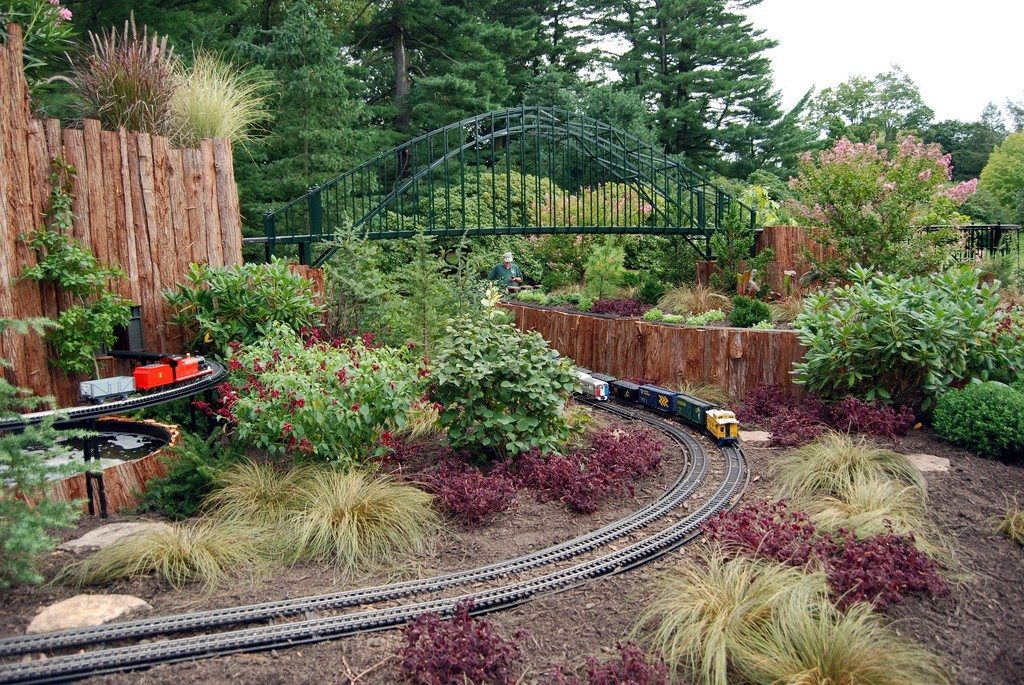Garden Train Ideas: How To Design A Train Garden In The Landscape

For train enthusiasts who also love landscaping and digging in the dirt, a train garden is the perfect combination of both hobbies. These larger-scale trains move through the backyard landscape, transforming part of the yard into a miniature world. Garden train layouts can be simple ovals or elaborate winding paths up hills and through tunnels. The most important part of how to design a train garden is to add smaller plants so they don't overwhelm the train itself. Whether you choose an antique model or a modern design, creating a garden train track can be a fun project for the whole family to enjoy.
Train Gardening Information
Train gardens should be planned out ahead of time. Think big, and break your plan up into stages. You don't have to install the entire project at once; in fact, it's much more fun if you build each stage separately, growing your small world just as a real train neighborhood might grow. Get garden train ideas by going out and looking at real trains. How do they pass through your neighborhood? Do you remember any special bridges with train tracks from your childhood? Take from a favorite book or from real life, but add a touch of the familiar to your design. Plan your garden train on as flat a surface as possible. Real trains might be able to pull heavy loads up steep hills, but it might strain the smaller engine of model trains. Incorporate real landscape details into your garden such as building a bridge over part of a pond or curving the track around a large boulder that's already in the yard.
Creating a Garden Train Track in the Landscape
The best train gardening information advises investing in quality brass tracks that withstand water and weather. Dig a trench about 3 inches (8 cm.) deep for the track and fill it with gravel. Lay the track on the gravel and fill the space in between the railroad ties with very small pebbles to keep it in place. Tack the track to bridges or other wooden bases with brass nails. Create landscaping with smaller plants that look as if they were larger. Cover the ground with groundcover plants and moss. Add small herbs, such as dwarf thyme and creeping rosemary, and make use of smaller succulents, such as hens and chicks, and flowers like miniature marigolds. Every plant does not have to look like a miniature version of its larger cousin, but they should all fit into scale with your train garden design. Add to your garden train set every year, expanding your miniature world each time. You'll have a lifelong hobby for your entire family to enjoy.
Sign up for the Gardening Know How newsletter today and receive a free copy of our e-book "How to Grow Delicious Tomatoes".